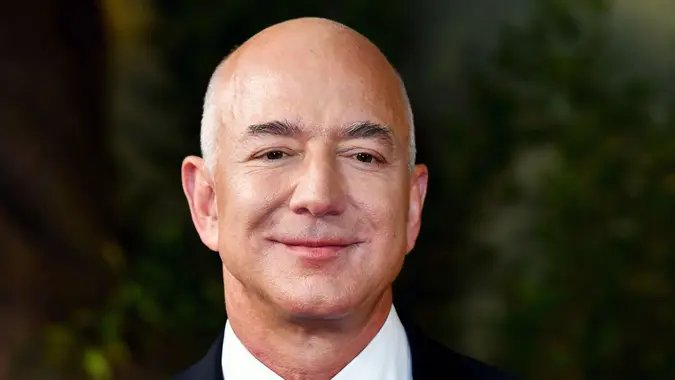What’s the Best Way To Quickly Pay Off $2K in Debt?

Commitment to Our Readers
GOBankingRates' editorial team is committed to bringing you unbiased reviews and information. We use data-driven methodologies to evaluate financial products and services - our reviews and ratings are not influenced by advertisers. You can read more about our editorial guidelines and our products and services review methodology.

20 Years
Helping You Live Richer

Reviewed
by Experts

Trusted by
Millions of Readers
Finding yourself $2,000 in debt can be a stressful experience, but with the right strategy, it’s possible to pay it off quickly and efficiently. Whether the debt comes from a credit card, a loan or unforeseen expenses, developing a plan to tackle it head-on is essential. This guide will explore the best ways to quickly pay off $2,000 in debt, helping you regain financial control and peace of mind.
Creating a 7-Step Debt Repayment Plan
Are you wondering, “How can I pay off $2,000 in debt fast?” The key to fast debt repayment lies in developing a targeted plan. Start by thoroughly examining your budget to pinpoint areas for potential savings. Redirecting these savings towards your debt is crucial. Here are seven strategic steps to help accelerate your journey towards becoming debt-free.
1. Budget Analysis and Cost Cutting
Begin by thoroughly analyzing your monthly budget. Identify expenses that aren’t essential and consider cutting them back or cutting them out completely. This could include dining out, subscriptions you don’t use frequently or luxury items that are not necessities. Redirecting these funds to your debt can significantly accelerate your repayment.
2. Increase Your Income
Explore opportunities to boost your income, if feasible. This could be through overtime at your current job, taking on a part-time job, freelancing or selling items you no longer need. Apply all additional income directly to your debt.
3. Debt Snowball or Avalanche Method
Consider using the debt snowball or avalanche method.
- The snowball method involves paying off smaller debts first for psychological wins.
- The avalanche method focuses on paying off debts with the highest interest rates first.
Since you’re focusing on a specific $2,000 debt, applying extra payments to this debt will quickly reduce the balance.
4. Negotiate Lower Interest Rates
Contact your creditor to negotiate a lower interest rate. A reduced rate means more of your payment goes towards the principal balance, not just interest, helping you pay off the debt faster.
5. Use a Balance Transfer Credit Card
If your debt is on a high-interest credit card, consider transferring the balance to a card with a 0% introductory APR. This can give you a window of opportunity to pay off the debt without accumulating additional interest.
6. Set Milestones and Track Progress
Break down your $2,000 debt into smaller, more manageable milestones. Here’s a breakdown to help you visualize and track your progress:
- Monthly milestone: Aim to pay off $500 each month. This breaks your goal into four manageable parts, making it easier to track and achieve.
- Weekly goal: If monthly goals seem too distant, break them down further into weekly payments of approximately $125.
- Daily target: For an even more granular approach, aim to save or pay off around $17 per day.
Celebrating each time you reach one of these milestones can boost your motivation and help you stay committed to your debt repayment plan.
7. Staying Committed and Avoiding Future Debt
Once you have a plan in place, commitment is key. Stick to your budget, keep looking for ways to save or earn more and avoid taking on new debts. Remember, the quicker you can pay off your current debt, the sooner you can enjoy a more financially secure future.
Final Take
Learning how to get out of debt is achievable with determination, strategic planning and disciplined spending. By following these steps and remaining committed to your financial goals, you can efficiently clear your debt and work towards a more stable and debt-free financial life. Remember, every payment, no matter how small, brings you one step closer to being debt-free.
FAQ
Here are the answers to some of the most frequently asked questions about paying off debt.- How long does it take to pay off a $2,000 debt?
- The time it takes to pay off $2,000 in debt varies based on your repayment strategy, monthly payments and any interest rates involved.
- If you can allocate $200 per month towards the debt, for example, it could take approximately 10 months to pay it off, assuming there's no high interest accruing.
- Increasing your monthly payment amount can significantly shorten this timeframe.
- Is $2,000 of credit card debt bad?
- While $2,000 in credit card debt isn't uncommon, whether it's bad depends on your overall financial situation and ability to repay. If the debt is manageable and you have a plan to pay it off without accruing excessive interest, it's not necessarily bad. However, if it represents a significant portion of your available credit or you're struggling to make payments, it could negatively impact your credit score and financial health.
- How can you pay off $3,000 in three months?
- To pay off $3,000 in 3 months, you would need to budget $1,000 per month towards your debt. This aggressive repayment plan requires careful budgeting and possibly finding ways to increase your income. Consider cutting non-essential expenses, using any extra income like bonuses and exploring additional work opportunities to raise the necessary funds.
- What are the three biggest strategies for paying down debt?
- Some strategies for paying off debt are the following:
- The avalanche method: Focus on paying off debts with the highest interest rates first while maintaining minimum payments on other debts. This method can save you money on interest over time.
- The snowball method: Pay off your smallest debts first for psychological wins, while maintaining minimum payments on larger debts. This can provide motivation as you see debts being fully paid off.
- Consolidation and refinancing: Consolidate multiple debts into one loan with a lower interest rate or refinance existing debts. Simplifying your payments could also lead to a reduction in the total interest you end up paying.
- Some strategies for paying off debt are the following:
Editor's note: This article was produced via automated technology and then fine-tuned and verified for accuracy by a member of GOBankingRates' editorial team.
 Written by
Written by 
























